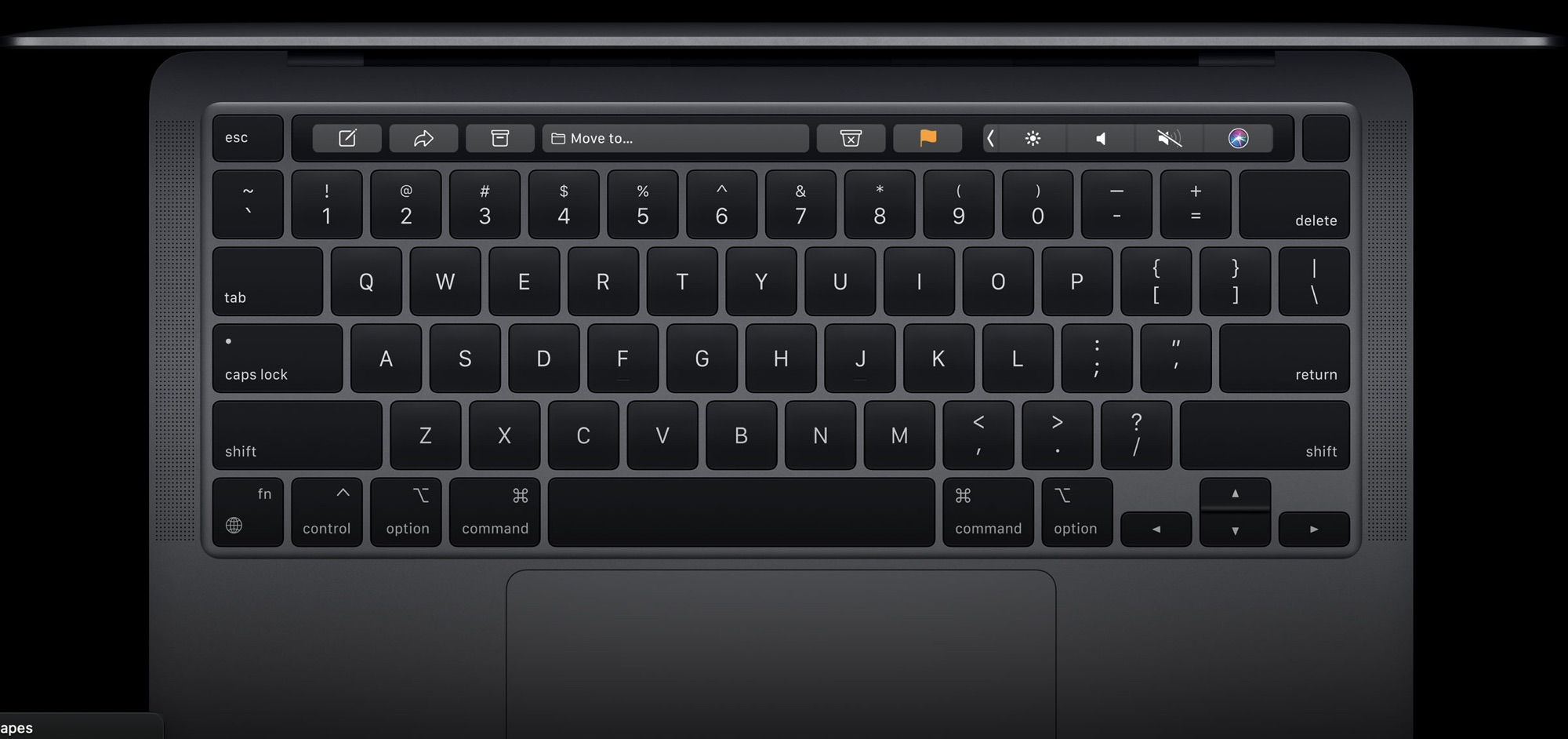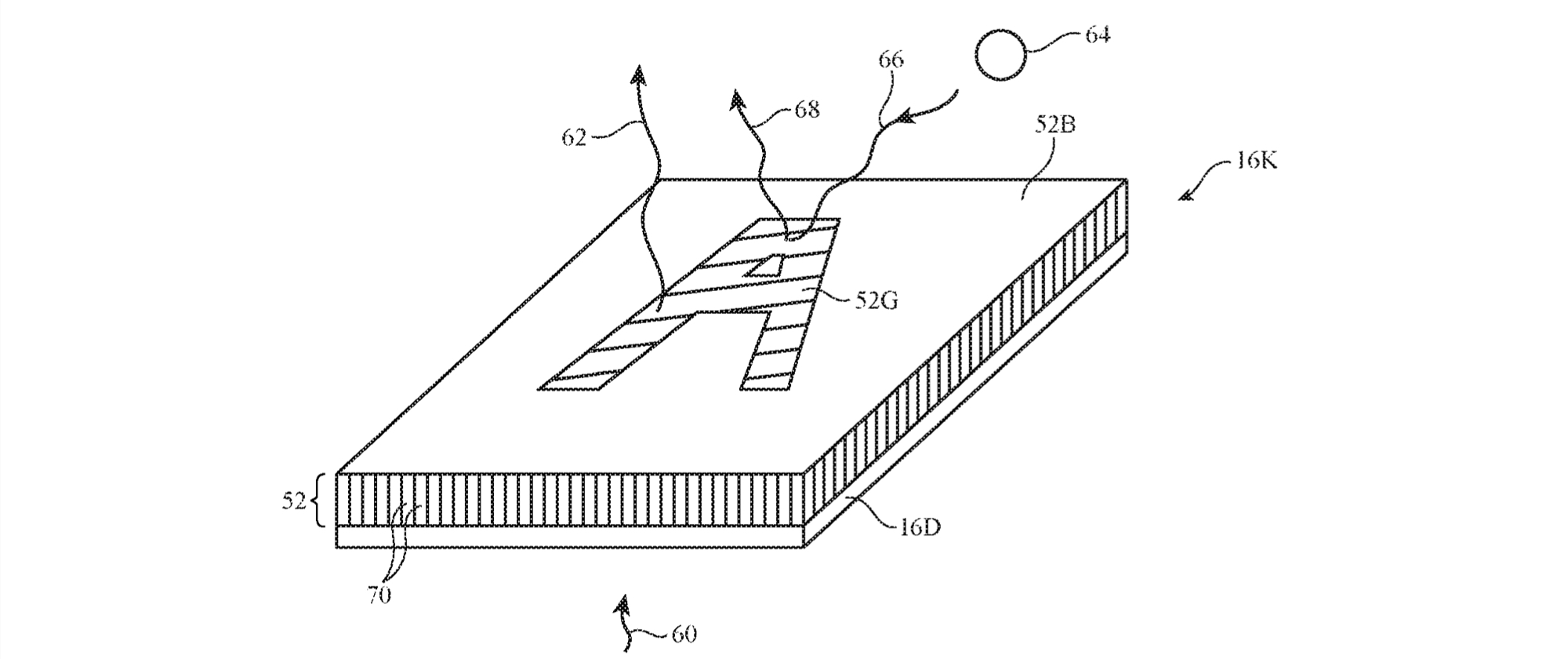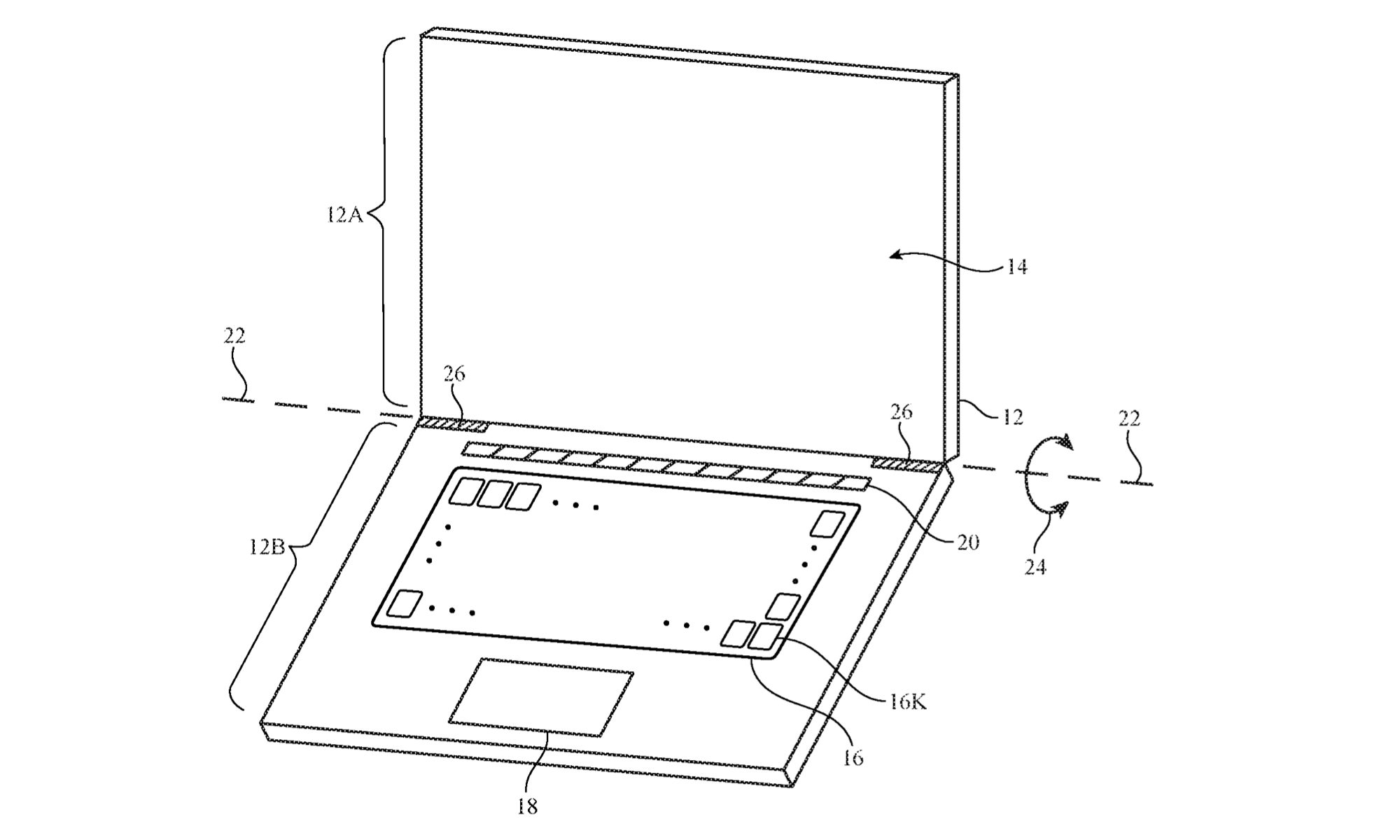I like the idea even though I don't think I would make use of such ability on a day to day bass.
Got a tip for us?
Let us know
Become a MacRumors Supporter for $50/year with no ads, ability to filter front page stories, and private forums.
Apple Researching Keyboards With Adaptive Displays on Each Key
- Thread starter MacRumors
- Start date
- Sort by reaction score
You are using an out of date browser. It may not display this or other websites correctly.
You should upgrade or use an alternative browser.
You should upgrade or use an alternative browser.
This is sure to make most users cringe, but as a video / audio editor and power user for many media applications - I'd love more ability for my workspace to transform based on the app that I'm using. The amount of shortcuts my brain can handle that differ from app to app has the potential to make my head spin daily, and visual cues would be a good transition to a more "touch-functional" Mac if we're never going to get a touch screen.
A touch-screen Mac is coming. It's inevitable, and proof is in the redesign of macOS Big Sur where controls and menus have been "given more breathing room". They carefully avoided mentioning that the changes are for a future touch-based interface, but it's obvious to anyone with a brain that that's why the changes were made.
All I want them to do is create a Touch ID keyboard for a Mac Desktop...
I'm surprised the latest M1-based Macs don't have Face ID built into them. It would be great for developers building FaceID-based apps, and countless other applications that we haven't thought of yet. Eye-based cursor control exists already, and that would be supercharged with Face ID tech.
My high school’s typing class had typewriters with the key glyphs erased. People caught looking at their keys were forced to use the blank ones instead.Agreed. I type very fast, but if the ”nobody looks at the keys so this is useless” people were right, there would be no need to print characters on the key caps in the first place. Keyboards with blank key caps aren’t very popular, after all.
Doesn't really matter if it did or not. The key point is that an OLED keyboard existed 12 years ago, so it qualifies as prior art that SHOULD invalidate Apple's patent claim. Of course it probably won't because in America patents are granted by default and then have to be overturned in the courts, but it is what it is.Did that ever ship? gave up following them a long time ago.
This is actually interesting. It's like the advantage of a touchbar (having it modular and adaptable), but with physical feedback. Just don't make them "touch".
Professional: (Pro)
| prəˈfeSH(ə)n(ə)l |
ADJECTIVE
1 relating to or connected with a profession.
• worthy of or appropriate to a professional person; competent ,skillful, or assured.
2 engaged in a specified activity as one's main paid occupation rather than as a pastime.
• (informal, derogatory) denoting a person who persistently makes a feature of a particular activity or attribute.
NOUN
a person engaged or qualified in a profession.
• a person engaged in a specified activity, especially a sport or branch of the performing arts, as a main paid occupation rather than as a pastime.
• a person competent or skilled in a particular activity.
This weird obsession that people have on computer forms and message boards that you have to edit 6 streams of 8K 60 video, or have 1,000 Logic tracks running at the same time, are you have to spend 90% of your time in Xcode and terminal to actually be considered “pro” is so stupid.
Someone who uses the built in calculator app to help them do their work is technically using a computer to be a pro.
That's why I placed pro in quotes. It's not too difficult to understand, is it?
I have wanted this forever. Even wrote to Apple several times begging for such a function. This is what people who speak and write in multiple languages have needed for a very long time.
Apple is researching keyboards with small displays on the keys to dynamically change the label on each key, according to a newly-granted patent filing.

The filing, spotted by Patently Apple, is titled "Electronic devices having keys with coherent fiber bundles" and was granted to Apple by the U.S. Patent and Trademark Office on the final patent day of this year.
The patent explains how each key on a keyboard could have "an associated key display" connected to "control circuitry in the keyboard" via a "coherent fiber bundle." Apple proposes that each key would be "formed from a fiber optic plate" with "opposing first and second surfaces."

While the patent stipulates that each key would need to contain a small display to provide the label, of which any compatible pixel array would work, the foremost technology put forwards by Apple is OLED. The key may be made from materials such as glass, ceramic, metal, or polymer, or even crystalline materials such as sapphire.

This system would allow the entire keyboard to be "reconfigurable" with labels that can change as needed. The patent highlights that keyboards could be reconfigured "for different languages, to temporarily convert a standard keyboard into a gaming keyboard in which keys correspond to particular in-game actions, or to otherwise modify the behavior associated with pressing the keys in the keyboard."
There is also the suggestion that each key could provide "visual feedback" to indicate the current status of each key, such as whether it corresponds to an uppercase or lowercase letter or an active ability when gaming.
Images included in the patent suggest that the adaptive keyboard could be used both in a laptop enclosure as well as a separate keyboard for desktop computers.

Crucially, this system does not interfere with the dome or scissor switches of physical keyboards. Unlike other Apple keyboard patents, such as one for a static glass keyboard or a full-size touchscreen panel, this proposition explicitly outlines a system to be used with moveable keys, so Apple could theoretically retain the design of its Magic Keyboard.
While patents do not necessarily prove what Apple is intending to bring to market, they can provide an interesting insight into what the company is researching and developing. Considering Apple has demonstrated its interest in adaptive displays on the keyboard through the MacBook Pro's Touch Bar, it does not seem unlikely that Apple would expand similar technology to each individual key at some point in the future.
Article Link: Apple Researching Keyboards With Adaptive Displays on Each Key
Take a look at the UK vs US keyboard. Our (UK) return key is a physical different shapeI would love this! It's fantastic if you use an alternate keyboard layout (like Dvorak, which I use). It would also allow Apple to use the same keyboard worldwide and have software display the keyboard layout. At least I think it would.
Dvorak keyboard confirmed!
Joking aside, this seems mildly useful, but I’d really prefer the ability for keys to change sizes. Instead of just having a keyboard that can change its display and layout in software, imagine it being able to change its physical layout on demand. It would require a new mechanism, sure, but picture a surface that can change the number of keys to just the number needed for a game, that could shrink the other keys and give you a full numpad when you need it, or that could even change into a single octave piano keyboard. Picture something like the iOS keyboard, except with actual raised surfaces, separation between keys, and key travel, like you get from an actual hardware keyboard.
Joking aside, this seems mildly useful, but I’d really prefer the ability for keys to change sizes. Instead of just having a keyboard that can change its display and layout in software, imagine it being able to change its physical layout on demand. It would require a new mechanism, sure, but picture a surface that can change the number of keys to just the number needed for a game, that could shrink the other keys and give you a full numpad when you need it, or that could even change into a single octave piano keyboard. Picture something like the iOS keyboard, except with actual raised surfaces, separation between keys, and key travel, like you get from an actual hardware keyboard.
So does using the clapping emoji. Software vendors should replace the clapping emoji with a fallback character to punish (mis-)users.👏 Self-proclaiming 👏 "pro" 👏 invites 👏 suspicion.
How on Earth can this be patentable? It’s obvious for years now that adaptive keys are where this will end in the future. US patent laws are insane it seems.
Apple is researching keyboards with small displays on the keys to dynamically change the label on each key, according to a newly-granted patent filing.

The filing, spotted by Patently Apple, is titled "Electronic devices having keys with coherent fiber bundles" and was granted to Apple by the U.S. Patent and Trademark Office on the final patent day of this year.
The patent explains how each key on a keyboard could have "an associated key display" connected to "control circuitry in the keyboard" via a "coherent fiber bundle." Apple proposes that each key would be "formed from a fiber optic plate" with "opposing first and second surfaces."

While the patent stipulates that each key would need to contain a small display to provide the label, of which any compatible pixel array would work, the foremost technology put forwards by Apple is OLED. The key may be made from materials such as glass, ceramic, metal, or polymer, or even crystalline materials such as sapphire.

This system would allow the entire keyboard to be "reconfigurable" with labels that can change as needed. The patent highlights that keyboards could be reconfigured "for different languages, to temporarily convert a standard keyboard into a gaming keyboard in which keys correspond to particular in-game actions, or to otherwise modify the behavior associated with pressing the keys in the keyboard."
There is also the suggestion that each key could provide "visual feedback" to indicate the current status of each key, such as whether it corresponds to an uppercase or lowercase letter or an active ability when gaming.
Images included in the patent suggest that the adaptive keyboard could be used both in a laptop enclosure as well as a separate keyboard for desktop computers.

Crucially, this system does not interfere with the dome or scissor switches of physical keyboards. Unlike other Apple keyboard patents, such as one for a static glass keyboard or a full-size touchscreen panel, this proposition explicitly outlines a system to be used with moveable keys, so Apple could theoretically retain the design of its Magic Keyboard.
While patents do not necessarily prove what Apple is intending to bring to market, they can provide an interesting insight into what the company is researching and developing. Considering Apple has demonstrated its interest in adaptive displays on the keyboard through the MacBook Pro's Touch Bar, it does not seem unlikely that Apple would expand similar technology to each individual key at some point in the future.
Article Link: Apple Researching Keyboards With Adaptive Displays on Each Key
All I want them to do is create a Touch ID keyboard for a Mac Desktop...
When I think of e-ink, I think of Kindle. The redraw is SO SO slow.The Nemeio keyboard has been recently kickstarted. It uses e-ink.
Not my plan. I hate emojis. Words are really concise compared to small images like emojis. But if you follow Apple and their main target demographic (teenagers and early 20 somethings), it sure seems like that is where tech is headed.The plan is for the world to use emojis in all text documents as a universal language
On a related note, that makes me a pro-Nintendo player, but amateur on Xbox and Play Station👏 Pro 👏 Users 👏 Never 👏 Look 👏 At 👏 the 👏 Keyboard 👏
The Nemeio Keyboard is Black and white only. No colors or graphics, like you can build in Stream Deck.The Nemeio keyboard has been recently kickstarted. It uses e-ink.
If Apple is going to do it they should make it like stream Deck,
And while they are at it, add a numeric keypad...
Register on MacRumors! This sidebar will go away, and you'll see fewer ads.


